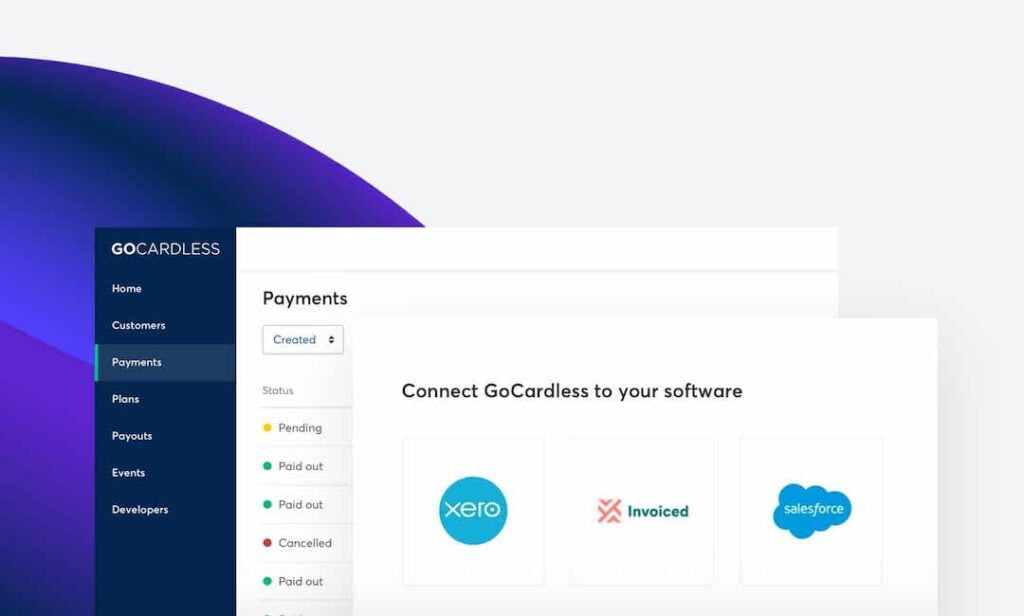Staring down the barrel of another recession, Carolyn Breeze, ANZ General Manager of GoCardless shares her insight on how financial transformation could recession-proof Australia’s business economy.
COVID-19 has incited the world’s largest and fastest digital transformation period in recent history. Disrupted supply chains, decentralised operations and remote teams have imposed a new way of doing business, all enabled by technology.
The pandemic has also impacted consumer spending behaviours, forcing companies to ramp up their online presence.
Australia Post’s 2020 eCommerce Report reveals that local eCommerce grew more than 80 per cent in the eight weeks after the World Health Organisation declared COVID-19 a global pandemic. With eCommerce becoming the new normal, the way consumers spend money is naturally evolving.

Online shopping and the subscription economy
Subscriptions and micropayments are big business in Australia, with research indicating that 70 per cent of the population, or 18 million people, count themselves as subscribers. The average household spends $660 per month on recurring goods and services, and throughout the pandemic, this has been exacerbated. Relationship-commerce platform Order Groove recorded a 40 per cent increase in new enrollments across most subscription verticals, with household goods and supplies ranking among the top growth categories.
For businesses to remain relevant in a post-COVID, recession-laden economy, they must support their online offerings with equally advanced and relevant digital payment options.
More than just digital transformation, COVID-19 has revealed the need for financial transformation.
Financial transformation refers to the process of making financial operations, processes and outputs more efficient.
Despite its potential for broad interpretation, financial transformation can produce use-cases that drive value for customers and companies alike.
For businesses to survive Australia’s first recession in the digital era, they need to start considering the value of financial transformation investments in parallel with digital strategies.
To the online checkout, and beyond
While eCommerce is the way forward, it also brings with it a new set of challenges. In particular, market saturation and knowing how to stand out from the crowd.
In a recession, consumers become more discerning with where and how they spend their money. Although, it’s not just about offering the lowest price, consumers want a positive experience at every touchpoint with a brand, including the checkout.
In a survey of 1,200 consumers in Asia-Pacific, 51 per cent admitted to abandoning their cart because their preferred payment method was not on offer. That equates to $7 billion in annual abandoned sales.
The rise of digital payments has brought more choice than ever to the eCommerce industry, with subscription models and buy now, pay later platforms becoming a trend that Australian consumers have latched on to for good. This boils down to two emerging payment behaviours: an aversion to debt, and a disinterest in ‘ownership.’ Research by Zuora indicates that 70 per cent of people believe subscriptions free them from the burden of ownership, with 57 per cent wanting to own less ‘stuff.’
These trends connect payments to more than just the checkout; it shows flexible payment options are a holistic part of the eCommerce experience.
The modern consumer is brand agnostic: if you’re not offering their preferred payment model, be it direct debit or subscriptions, they will find a competitor who does.
Flexible payment options are part and parcel of the digital transformation process. But setting yourself up with checkout options doesn’t have to be complicated when you lean on best-in-class fintech providers.

Get fintechs to do the hard work for you
Financial infrastructure and payments are a complex part of any business.
Given the relative newness of diverse digital payment methods, it’s unlikely that the average company will have a qualified ‘payments expert’ to lead a financial transformation strategy. That’s why financial technology providers (fintechs) exist; to take the complexity out of the transformation journey.
Australasia is home to over 5,000 active fintechs, and unlike the big banks, fintechs are considered specialists in niche elements of financial services.
The aim of financial transformation is to automate certain processes that minimise human-touch; reduce spend; and maintain a competitive edge when it comes to customer acquisition. The best way to achieve this? By leaning on providers who transform both the back-end financial infrastructure of your business, and the customer experience.
As an example, 70 per cent of ANZ businesses are looking to shift to a subscription model within the next two to three years. However, having the right financial transformation strategy will be critical to their success as a subscription provider.
Recurring billing platforms like Chargebee make it easy to accept regular payments. To get the highest return on investment however, companies must make sure their back-end systems can accept micropayments seamlessly for the customer and business. Finding a low-touch platform that offers the infrastructure to support both of these functions is essential. There is no point investing solely in customer-focused technology if it causes more work for you behind the scenes.
The real value of fintech-led transformation is using best in class payment providers enabling businesses to replace outdated practices like paper-based bank debit in the case of GoCardless.
Moreover, the specialist and agile nature of fintech platforms puts the companies who use them on the cutting-edge of innovation, helping them navigate and recession-proof their business for the future.
Carolyn Breeze is the General Manager of ANZ at GoCardless, the global leader in recurring bank-to-bank payments. They’ve created a global bank debit network, to rival credit and debit cards, as well as a platform designed and optimised for taking invoice, subscription, membership and instalment payments.

